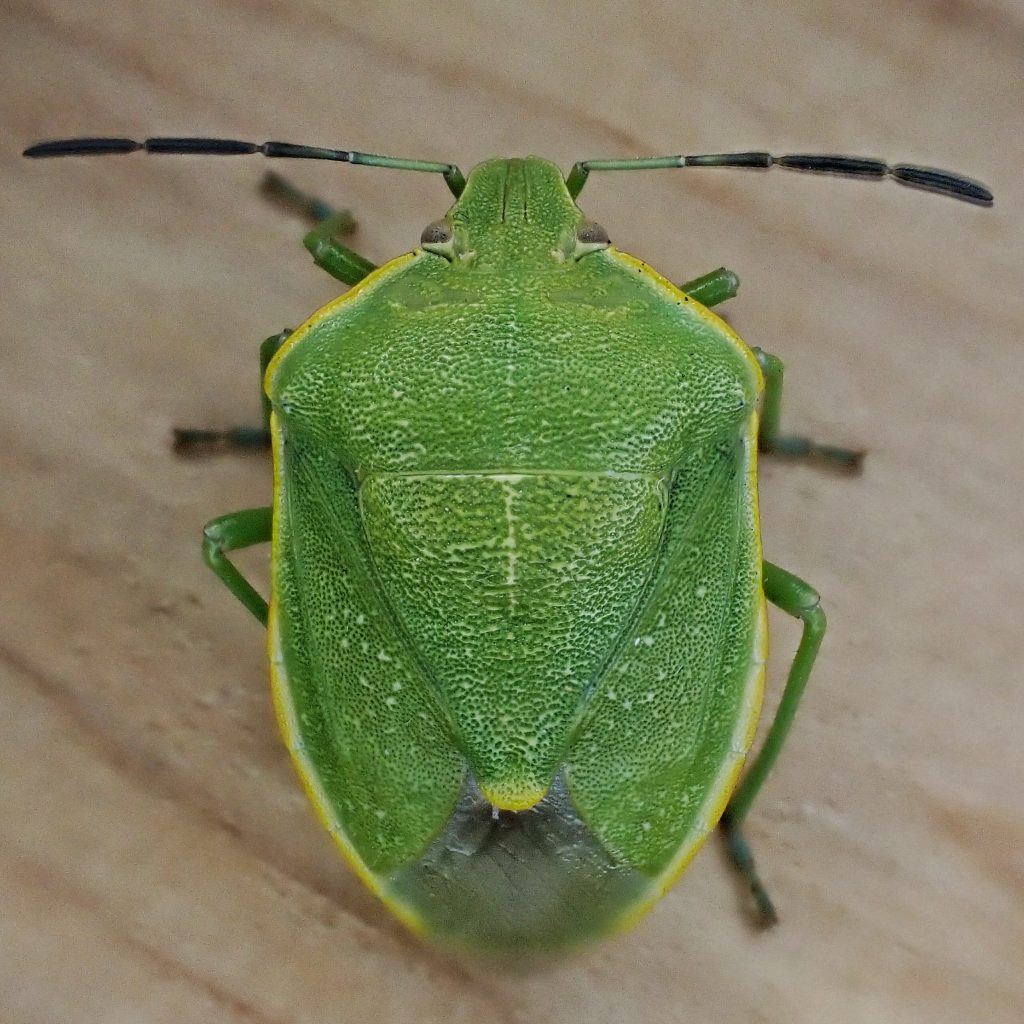
Back in mid-August, as I was ascending the stairs to our apartment, I spotted a green stinkbug on one of the steps, though I knew immediately that it wasn’t a Green Stinkbug (Chinavia hilaris), because it lacked the black marks on the connexivum (flattened margins of the abdomen) of that species. After a few minutes with ‘Pacific Northwest Insects’, I was pretty sure it was a Chlorochroa sp., and because of the yellowish spot on the apex of the scutellum, and the clear, exposed wing membrane, I thought it was C. rossiana. So I submitted it to BugGuide, but they weren’t willing to commit to anything beyond Chlorochroa sp.
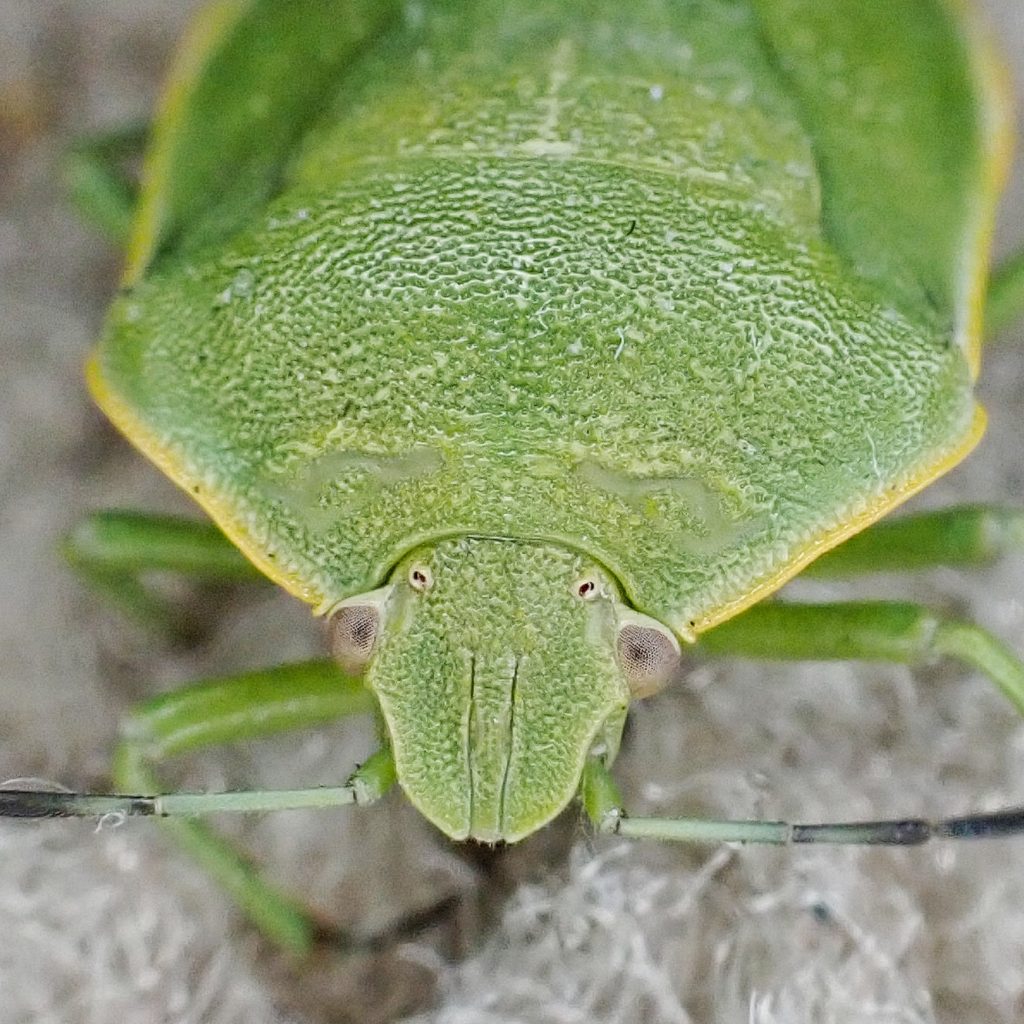
Since I couldn’t access a key to the species of that genus I thought about just doing a profile of Chlorochroa in general, but the other most likely suspect, C. ligata, is quite an agricultural pest, whereas C. rossiana doesn’t seem to be thought of as a pest, and it would’ve been unwieldy to try to profile both of them. During that research I found papers by Donald B. Thomas, a name I recognized from the Pentatomidae (stink bugs) pages at BugGuide, and there was an email address, so I took a flyer and sent him the photos. And Don was gracious enough to not only confirm my identification, but to send me the paper wherein he, G. Buxton, and R. Froeschner, revised the sayi group of Chlorochroa.
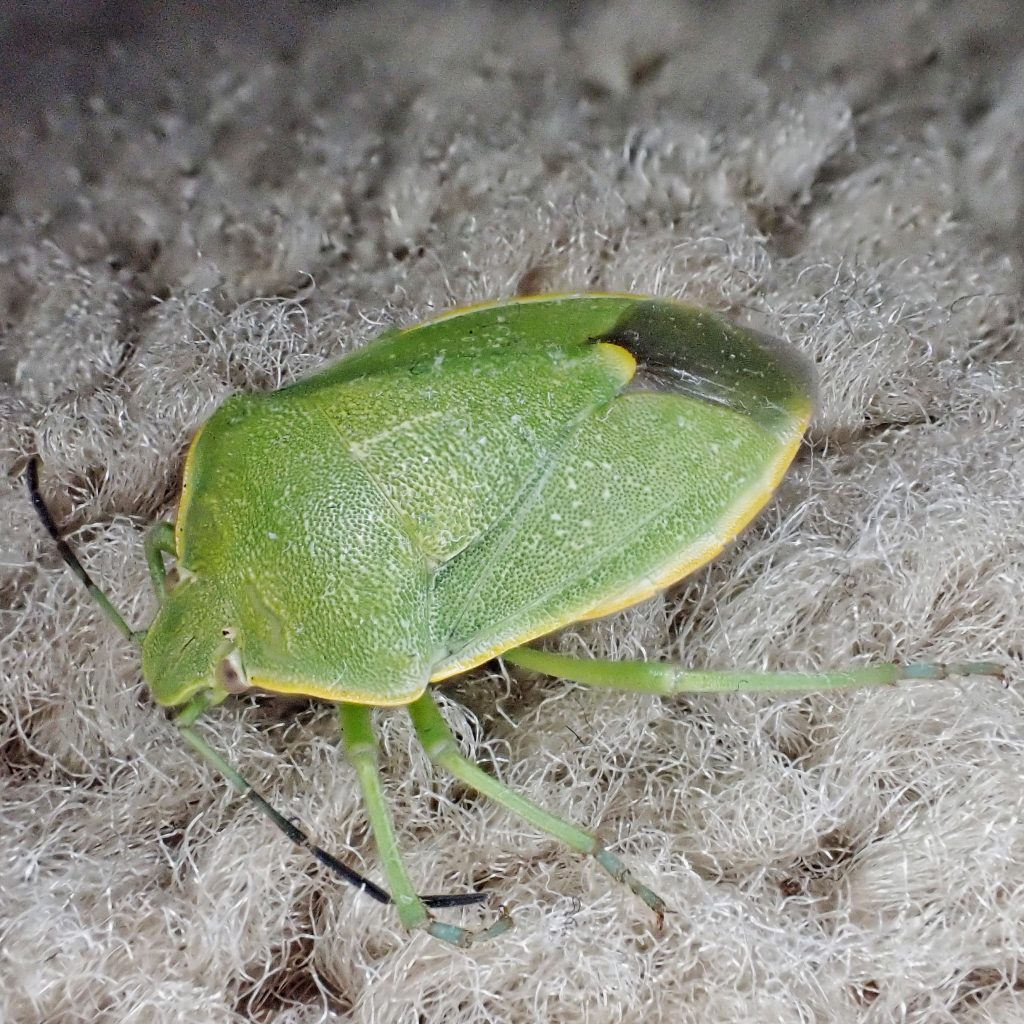
There doesn’t seem to be much known about the life history of this species, which may be a good thing for Chlorochroa rossiana, since it’s probably because it is relatively harmless to the economic interests of humankind, and thus hasn’t been studied so it can be better targeted for extermination. One can only hope that these handsome bugs, which are native and endemic in a narrow band that stretches from n California to n BC and is within 75 miles or so of the Pacific Ocean, adapting and evolving here for millennia alongside the other native flora and fauna, can survive the habitat destruction, the pesticides, the climatic shifts, and the other threats to their existence here in the 21st Century.
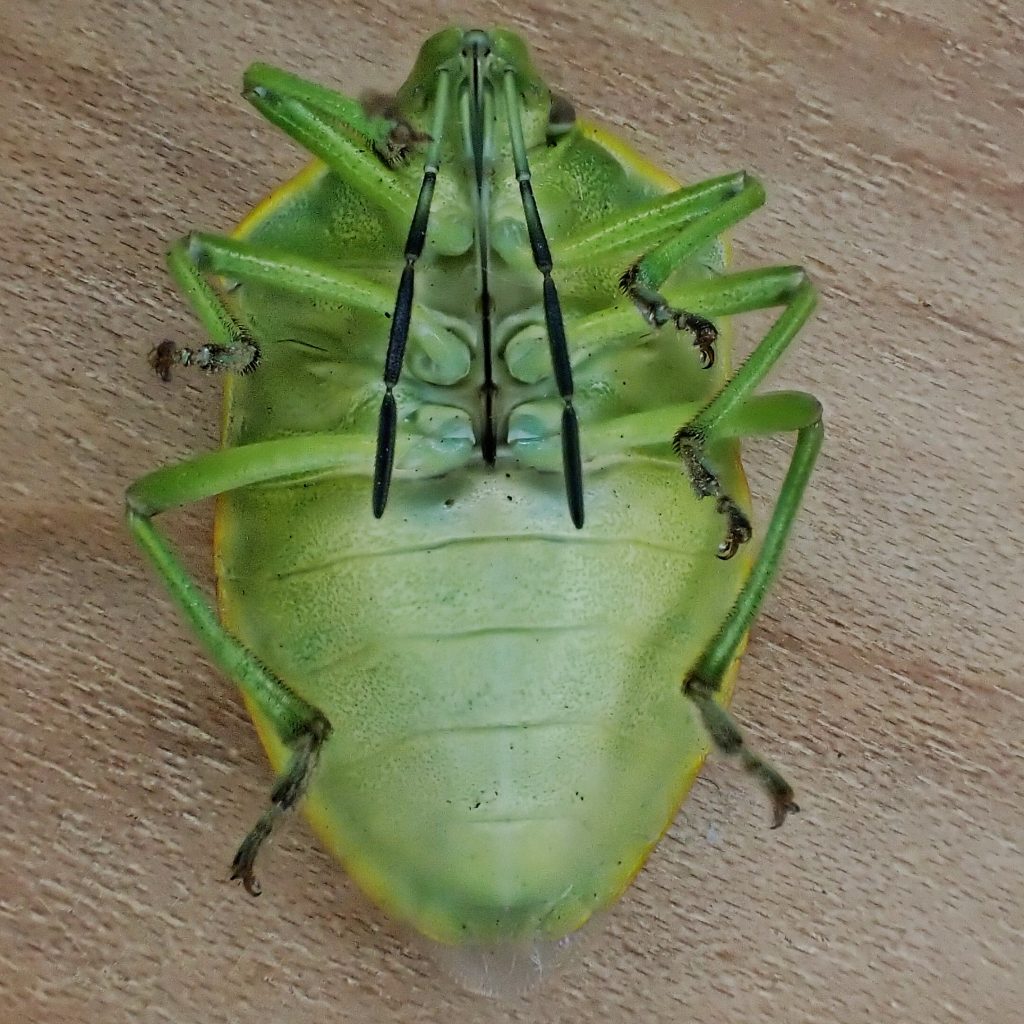
Description-Medium sized (11-15mm) bright green stinkbug with no white spots on the scutellum, the apex of which is yellow green; wing membrane is clear, and the area between the groove on the hemelytra and the margin (the embolium) widens as it gets toward the tip; beak just reaches the base of the hind legs (the hind coxae).
Similar species–Chlorochroa ligata is larger (13-17mm), has purple in the wing membrane, orange apex to scutellum, and is often much darker in color; C. sayi and C. granulosa have 3 white dots at the front of the scutellum ; C. uhleri has the embolium parallel; Chinavia hilaris have contrasting bands on antennae and spots on margins of abdomen; Thyanta sp have short pronotum and are usually less than 10mm long
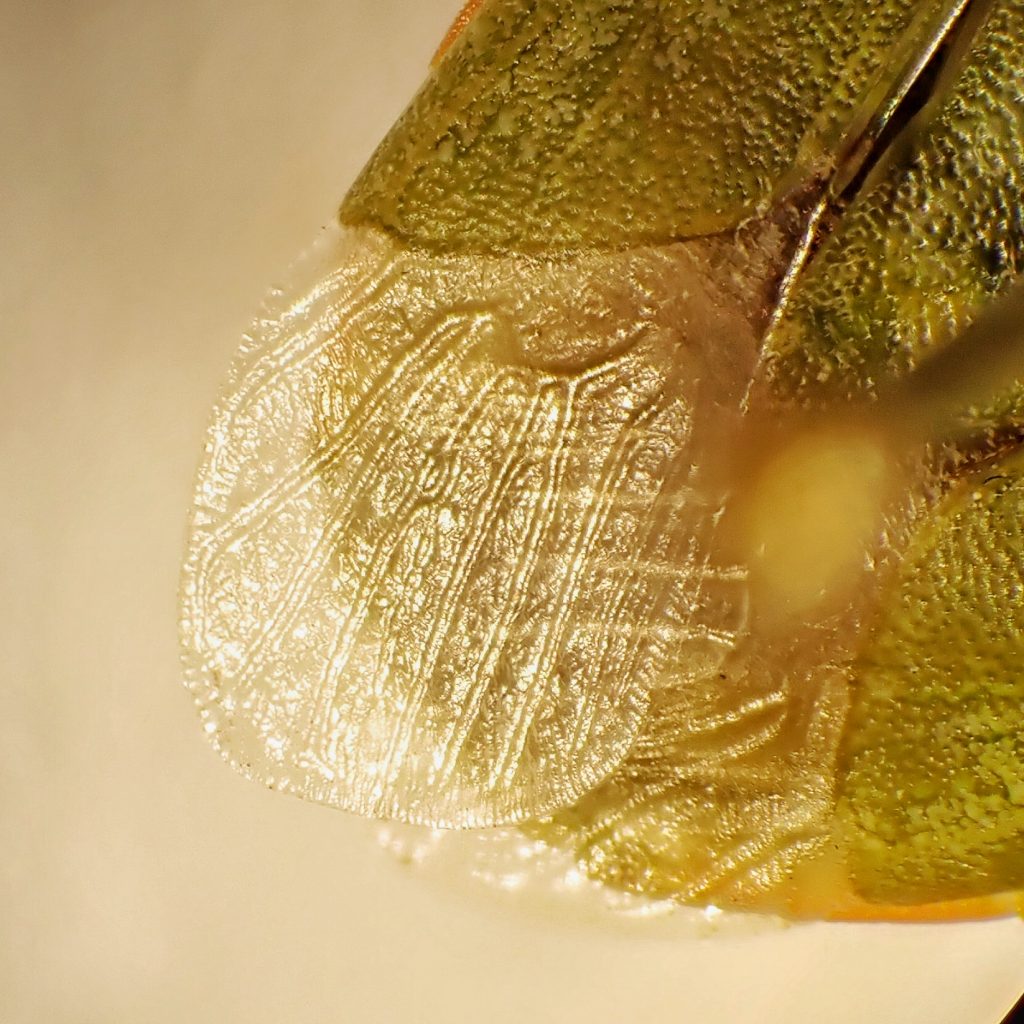
Habitat-I can find nothing specific for this species, but its limited range (near the coast), and it’s known plant associations, suggests it prefers moist to mesic, low elevation, forest and woodland edges and openings.
Range-Endemic to the West Coast of North America; in our region it is found from the Pacific to the eastern edges of the Willamette Valley and Puget Trough, and at low elevation coastal sites both north and south of those areas.
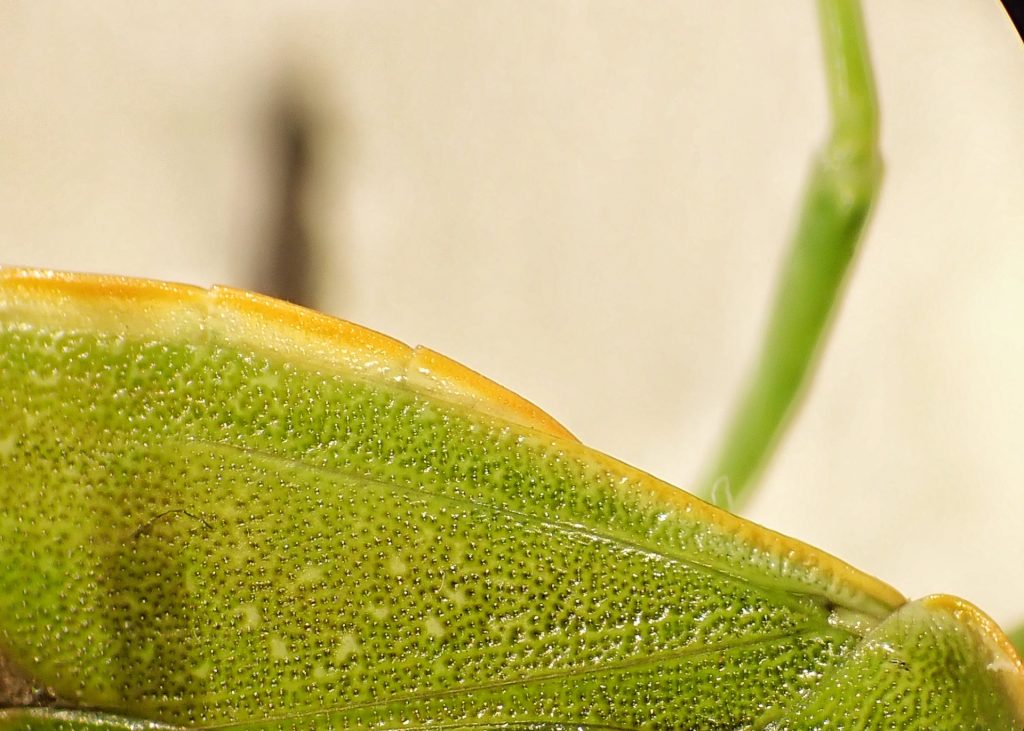
Eats-This species has been found on Oregon Grape (Berberis spp.), Wild Rose (Rosa spp.), spectacle pod (Dithyrea maritima), Clover (Trifolium spp.), Groundsel (Senecio vulgaris), Cocklebur (Xanthium strumarium), and Alfalfa (Medicago sativa).
Eaten by-Presumably by any insectivore undeterred by their chemical defenses.
Adults active-Adults maybe found year around, but are usually sheltered and in some state of dormancy from late fall to early spring.
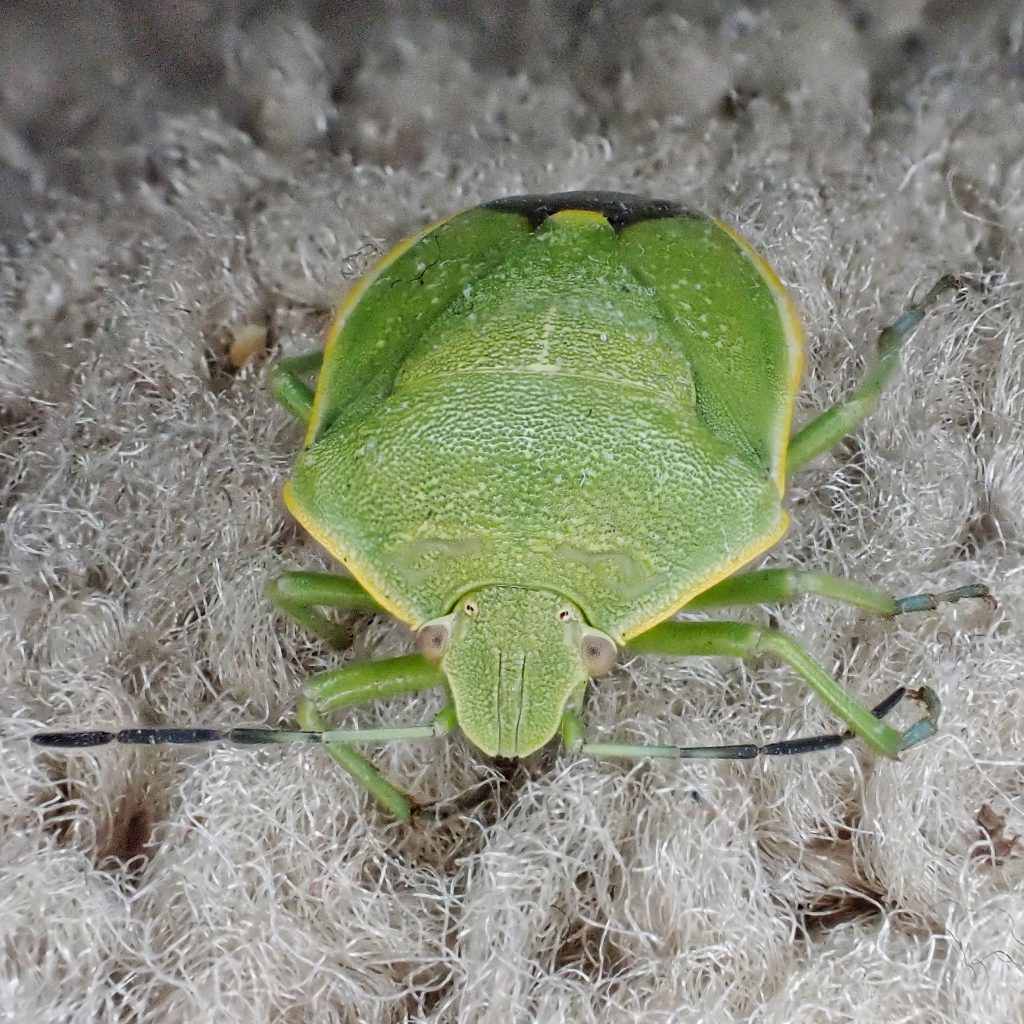
Life cycle-I can find nothing specific for this species, but judging by related species the eggs are probably laid in mid spring in rows on a food plant, and take about 3 weeks to hatch; 5 instars are required to reach maturity, which takes about two months; apparently overwinters as adults, which die shortly after breeding.
Etymology of names–Chlorochroa is from the Greek words for ‘green colored’, which is certainly apropos, since these bugs are so green even a color blind guy such as myself can see it. The specific epithet rossiana is named in honor of the former Russian Colony at Fort Ross, California. This bug was originally described by the Russian entomologist Jacob Alexander Kuschakewitsch in 1867, but he gave it the name Cimex flavomarginatus, which was already in use, and thus the renaming and recategorizing by Thomas et al. in 1983.
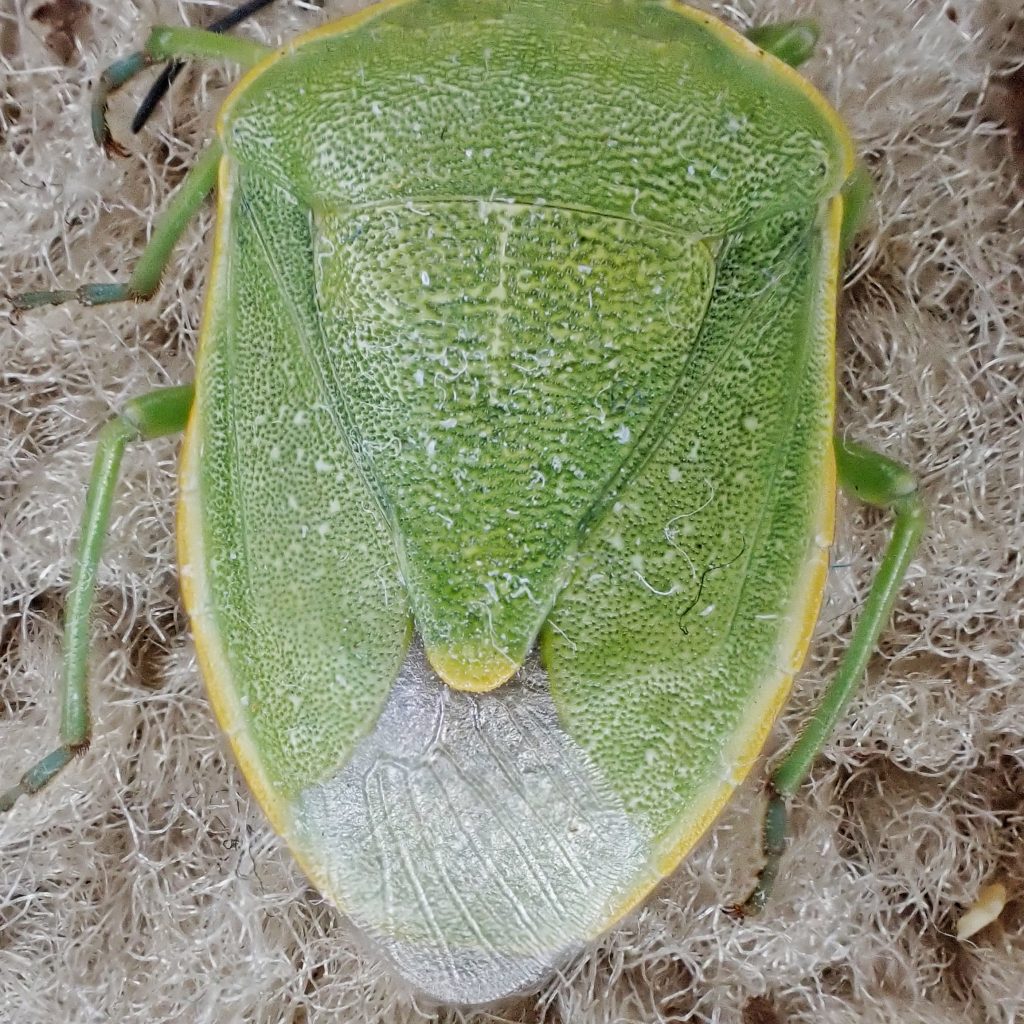
Species Chlorochroa rossiana – BugGuide.Net
https://sci.bban.top/pdf/10.4039/Ent11983-1.pdf?download=true
https://scholarworks.montana.edu/xmlui/bitstream/handle/1/3799/31762001568813.pdf?sequence=1
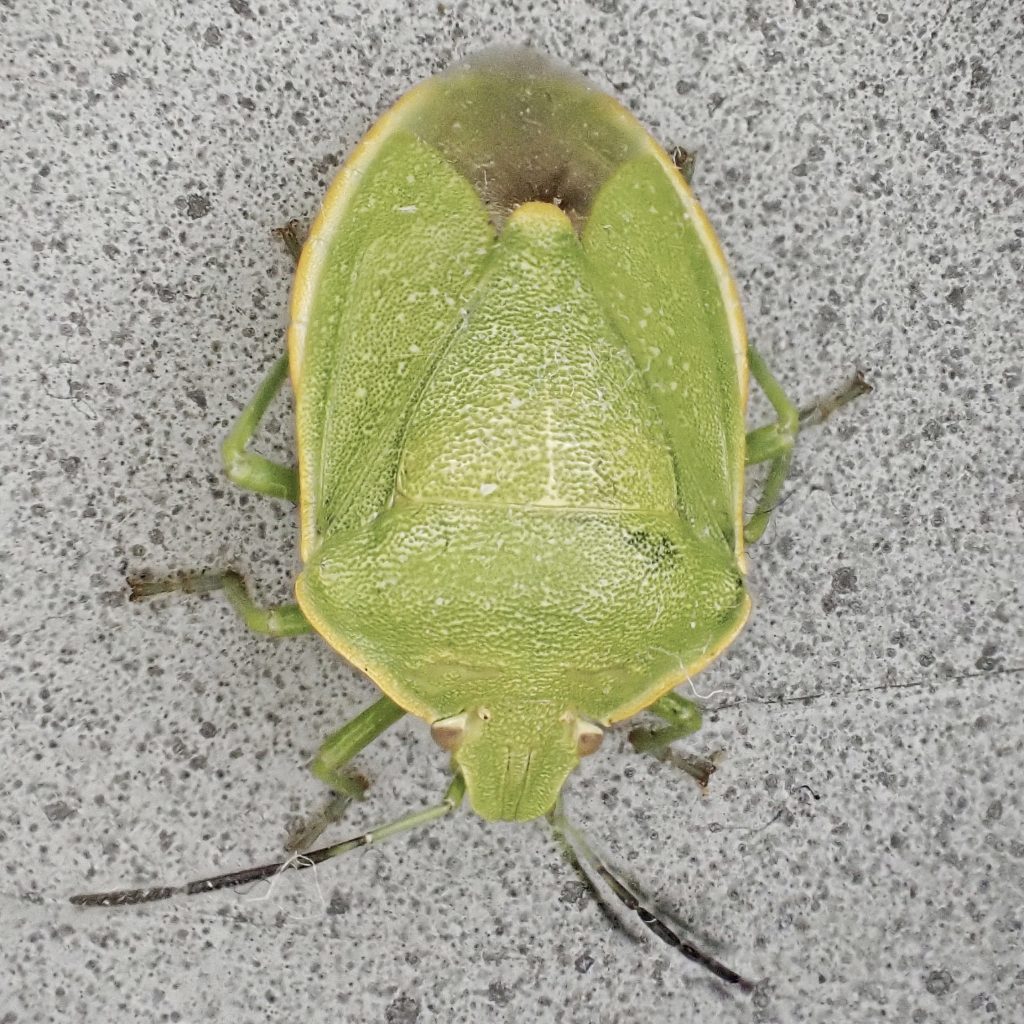
hi I found one of these on my screen door in eastern Washington. I found your post by a google image search after taking a few photos of my own. I was shocked to read this insect has a limited coastal range as I’m hundreds of miles from the coast. What do you think?
Well Nick, it’s always possible to find things outside their range. But are you sure it is C. rossiana? C. ligata can be very similar, and it is much more common and widespread. I struggled to positively identify my specimen, and ended up getting expert help to confirm it. Do you have any photos you can share?
I also found your article with Google image search. We found this little guy while picking blackberries and took a picture because we hadn’t seen them before. They must also eat blackberries, because he pooped soon after this and it just looked like drops of blackberry juice
That seems pretty likely, Becca! There doesn’t seem to be a lot known about this species. Thanks for sharing that with us!